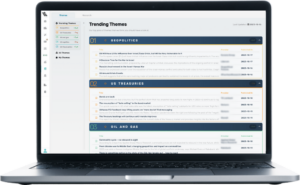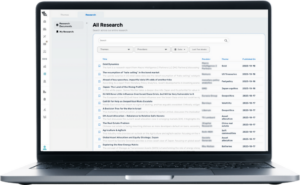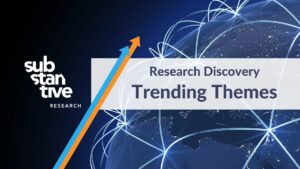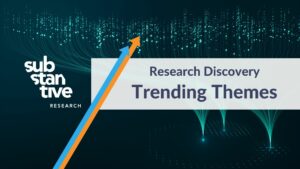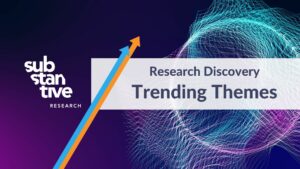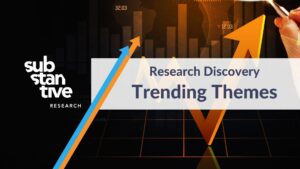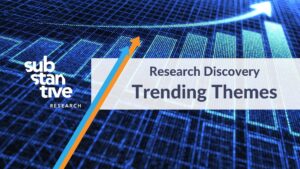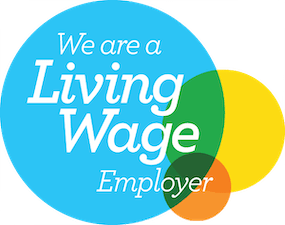Disclaimer: The following content is an archive of Substantive Research Discovery – Trending Investment Themes, as delivered as weekly insights to our paid subscribers. Links to gated content have been removed.
Gavekal: Searching for growth drivers
Wealth effects due to rising asset prices cause nominal consumption to surge.
The US household net worth-to-consumption ratio has rebounded due to the equity rally and rising home prices.
Wealthier households are more likely to pay up for goods and services, which could end up boosting both growth and inflation. Click here.

StoneX: The 2% inflation target is dead
A buoyant economy, high gasoline prices, the wealth effect, and house prices should feed inflation this summer
Inflation has exceeded 2% for three years. The Fed has effectively abandoned the 2% target. Click here.


Apollo Global: Record-high liquidity to support equity and credit markets
One way to measure liquidity is to add bank reserves and money market assets, see chart below which shows that there is record-high liquidity to push stock prices higher and credit spreads tighter.
In particular, once the Fed starts lowering interest rates, some of the $6 trillion in money market funds is likely to find its way into stocks and credit. (No note)

Rosenberg Research: Market throws cold water on inflation angst (March 26)
Dave Rosenberg highlights that the stability in inflation expectations, as measured by the 10-year nominal yield minus the TIPS equivalent, suggesting that fears of a return of inflation are misplaced.
He points to the Leading Breakeven Index, which confirms the stability in market-based inflation expectations and indicates that investors should not be concerned about an impending inflation upswing.
Any further price weakness in the Treasury market driven by inflation concerns should be seen as buying opportunities, as pricing pressures are expected to fade away. Click here.

Pantheon Macroeconomics: Rates can’t stay at their current level
The labour market is showing signs of a downturn, which could have significant implications for the economy and the Federal Reserve’s response.
The economy does not need real interest rates in excess of 2% and rising; the Fed will have to act to keep inflation from falling below the target late 24/early 25.
We expect 125bp cuts this year, starting in June. Click here.

MRB: The last yield anchor lifts
The Fed is intent on lowering policy rates, but even by its own admission lacks economic justification to do so, based on the latest dot plot.
The BoJ finally took a first step by hiking rates, which has started to lift the last major anchor for global bond yields.
Economic developments in Japan provide a warning for those still betting on sluggish economic growth and persistently low inflation elsewhere. Click here.

HSBC: Will AI turbocharge US outperformance?
HSBC believes that the market is underestimating the potential productivity boost that artificial intelligence (AI) could bring to various sectors.
They suggest that rapid AI adoption could drive a compound annual growth rate of 7.5% in S&P 500 earnings over the next decade, leading to a fair value of around 5,900 for the index.
They also highlight the potential for AI to sustain US exceptionalism, as the country is expected to adopt and deploy AI technologies faster than other regions. Click here.



